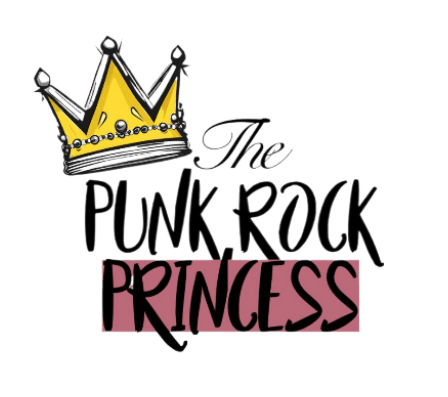

3 Tips On Looking After Your Big Dog
There’s something magical about sharing your home with a big dog. Their loyal eyes, gentle personality, and ability to make your sofa disappear beneath them are truly special. But as any owner of a Great Dane, Mastiff, Saint Bernard, or other giant breed will tell you, caring for a large dog is very different from looking after a smaller pup.
Big dogs come with big hearts, but they also have big needs. From joint health and nutrition to training and daily living, understanding these unique requirements will ensure your gentle giant leads a long, healthy, and happy life. Here are three essential tips for looking after your large dog.

1. Protect Their Joints and Watch for Hip Dysplasia
When it comes to large dog breeds, joint health should always be a priority. One of the most common issues that can affect big dogs is hip dysplasia, a hereditary condition where the hip joint doesn’t fit properly into the socket. This can lead to pain, stiffness, and difficulty moving if left untreated.
Signs your dog may have hip problems:
If you notice that your dog seems to limp, struggle to stand up, or has legs that are sensitive to touch, it’s time to book a vet appointment. Early detection is key because, while hip dysplasia is often genetic, management and treatment can prevent it from worsening.
How to support joint health:
Big dogs benefit from regular, low‑impact exercise such as daily walks, swimming, and gentle play. Avoid repetitive high‑jump activities or running on hard surfaces, as this can place unnecessary strain on their joints.
Weight management is another crucial factor. Extra weight equals extra pressure on hips and knees, which can speed up wear and tear. A balanced diet, portion control, and regular vet check‑ups will help keep your dog at a healthy weight.
Some owners also choose to support joint health with supplements like glucosamine and omega‑3 fatty acids, but always consult your vet before introducing anything new to your dog’s diet.
By being proactive about joint care, you’ll help your big dog stay active, playful, and pain‑free well into their senior years.
2. Invest in the Right Accessories and Home Set‑Up
Living with a large dog often means re‑thinking your home environment. What works for a 5‑kg terrier won’t necessarily work for a 50‑kg Labrador or a 70‑kg Great Dane.
Start with dog beds and sleeping areas. Large dogs need sturdy, supportive beds, ideally with orthopaedic padding to protect their joints. A flimsy cushion may be fine for a small dog, but a giant breed will flatten it in no time. Investing in a high‑quality bed not only keeps them comfortable but also supports their long‑term joint health.
Food and water bowls are another consideration. Raised feeders are great for big dogs because they prevent neck strain and can even help with digestion. Pair this with durable bowls that won’t tip over easily, because one swipe of a large paw or enthusiastic tail can create chaos.
Leads, harnesses, and collars should be strong and secure, made with materials designed for large breeds. A standard leash that works for a Cocker Spaniel might snap if your giant dog decides to lunge after a squirrel. Look for heavy‑duty clips and reinforced stitching for safety and control.

Even furniture and household items need consideration. If your big dog loves the sofa (and let’s be honest, most do), make sure it can support their weight or use a sturdy throw blanket to protect the fabric. Planning your home around your dog’s needs helps create a safe and comfortable space for both of you.
It is much easier to buy accessories and furniture for smaller dogs, as you don’t need to worry about how much weight the item can hold. When it comes to bigger dogs, you need to make sure you choose quality pieces that are suitable for your dog’s size.
3. Prioritise Training and Proper Nutrition
A well‑behaved big dog is not just a joy to live with—it’s essential for safety. While a small dog jumping up at a guest might be cute or mildly annoying, a 70‑kg dog doing the same can knock someone off their feet.
Training for a gentle giant:
Start with basic obedience commands such as “sit,” “stay,” and “come.” Socialisation is equally important—introduce your dog to new people, other pets, and different environments early on. This helps prevent nervous or overly excited behaviour that could cause accidental harm.

Big dogs respond best to positive reinforcement. Use treats, praise, and gentle correction, and avoid harsh punishment. Consistency is key: the earlier you establish boundaries and routines, the easier life will be for both of you.
Nutrition tailored for large breeds:
Feeding a big dog isn’t just about giving more food—it’s about feeding smarter. Large dogs have unique dietary needs, and the wrong food can lead to joint problems, obesity, or digestive issues.
Choose a high‑quality dog food designed for large breeds, which often includes:
- Controlled calorie levels to avoid rapid weight gain
- Joint‑supporting nutrients like glucosamine
- Balanced protein and fat for strong muscles without excess weight
Be mindful of portion control, and consider splitting meals into two or three feedings per day to reduce the risk of bloat, a dangerous condition that can affect deep‑chested breeds.
A combination of training, socialisation, and proper nutrition will help your big dog grow into a healthy, happy, and well‑mannered family member.

Loving Life with a Big Dog
Caring for a large dog can be a little more work, but it’s endlessly rewarding. They might take up more space on the sofa, eat more food than you imagined, and require a bit more planning, but the love and loyalty they give in return is priceless. By focusing on joint care, home readiness, proper nutrition, and consistent training, you’ll set your gentle giant up for a long, healthy, and joyful life.
At the end of the day, big dogs may come with big responsibilities, but they also bring big hearts, big cuddles, and unforgettable memories.
Related articles you might like
- Top 5 Health Tips for Large Dog Breeds – Keep your giant pup active and strong
- How to Train a Gentle Giant – Essential socialisation and obedience tips
- The Best Dog Accessories for Big Dogs – Beds, feeders, and gear that last














